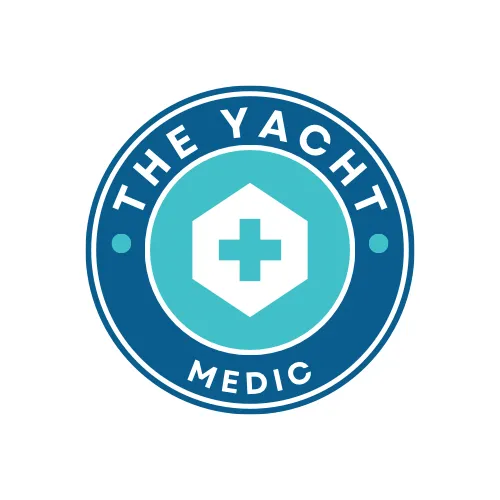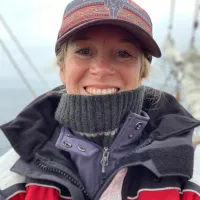See Our Latest Blogs
Beyond Boundaries, Beyond Rescue
Mastering Self Reliance At Sea

DR-ABC-DEF
DRSABC-DEF in Marine, Yacht & Extreme Medicine
The Scenario
Imagine you're on your yacht, anchored off a remote Caribbean island. The guests are learning to kitesurf when one loses control, gets dragged into a parked tender, and slams his head against the console. He suffers a 5cm laceration on the right temple, concussion, and was unconscious for approximately one minute. What are you going to do? There are no ambulances. No hospitals. No immediate medical care. Your structured response will determine the casualty’s outcome.
The DRSABC-DEF framework is your essential toolkit for managing medical emergencies in remote, high-stakes maritime environments.
Let’s break it down:
D – Danger Before rushing in, assess the scene to avoid further casualties.
✔ Environmental Hazards – Fire, flooding, unstable rigging, overhead booms, rough seas, or entrapment.
✔ Crew & Bystander Safety – A single casualty is manageable, but multiple casualties can overwhelm your resources.
✔ Secure the Area – Anchor loose equipment, eliminate electrical risks, and ensure personal safety gear (gloves, mask, harness). Key Marine Risk: Slippery decks, shifting equipment, confined spaces, CO2 leaks in enclosed areas.
R – Response Quickly assess the casualty’s level of responsiveness:
✔ AVPU Scale: Alert – Are they fully aware? Voice – Do they respond to verbal stimuli? Pain – Do they react to a painful stimulus (sternal rub)? Unresponsive – Critical intervention needed.
✔ Assess Duration of Unconsciousness 3 seconds? 30 seconds? 3 minutes? The longer the unconscious period, the higher the risk of brain injury. Marine-Specific Considerations: Sudden unconsciousness may indicate carbon monoxide poisoning, heatstroke, head trauma, drowning, or hypoxia.
S – Send for Help
✔ Activate Onboard Emergency Protocols & Accident Management Plan
✔ Use VHF Radio: Mayday – Life-threatening emergency. Pan-Pan – Urgent but not immediately life-threatening.
✔ Call for Remote Medical Support If you have MSOS Telemedicine (THEMIS) or another service, contact them early. Provide: Patient’s condition Level of consciousness Suspected injuries Available resources onboard Key Marine Risk: Delays in evacuation mean your ability to stabilize matters more than speed to hospital.
A - Arterial Bleed
✔ Stop Bleeding,
✔ Wound Packing & Compression
✔ Haemostatic Agent (eg. Celox)
✔ Tourniquet
A – Airway
✔ Ensure the airway is clear – Check for water, vomit, blood, food, or foreign objects.
✔ Spinal Precautions – If a head injury or fall is suspected, do not move the casualty’s neck.
✔ Use Airway Adjuncts (if available) NPA/OPA – Use if unconscious but breathing. At sea, airway management is a major priority. Drowning, inhalation injuries, or choking can lead to fatal hypoxia. B – Breathing
✔ Check for breathing – Look, listen, and feel for 10 seconds.
✔ If not breathing: Start CPR: 30:2 compression-to-breath ratio. Hands-Only CPR if no mask/resus bag.
✔ Administer High-Flow Oxygen (15L/min)
✔ Monitor for Secondary Drowning A patient may initially seem fine but develop fluid in the lungs hours later. Key Marine Risk: Decompression sickness, pneumothorax, CO2 poisoning, drowning, or smoke inhalation can cause delayed respiratory failure.
C – Circulation & Bleeding Control
✔ Check Pulse & Control Major Bleeding Immediately
✔ Use: Direct Pressure Hemostatic Dressings (Celox, QuikClot) Tourniquets (if severe limb bleeding)
✔ Manage Shock Keep warm (hypothermia is common at sea). Elevate legs if no spinal injury. Give fluids if safe. Key Marine Risk: Propeller injuries, winch accidents, and crush injuries require aggressive hemorrhage control. D – Disability & Reversing the Cause
✔ Use AVPU & Glasgow Coma Scale (GCS) to track changes.
✔ Pupil Check – Unequal pupils may indicate brain trauma.
✔ What’s causing the disability? Reverse it. Cold? Warm them slowly. Heatstroke? Cool rapidly. Hypoxic? Give oxygen. Bleeding? Stop it (compression, wound packing). Key Marine Risk: Unexplained confusion, seizures, or poor coordination may indicate carbon monoxide poisoning, decompression illness, or a neurological injury. E – Exposure & Evacuation
✔ Exposure Management Protect from hypothermia (wet clothing, wind chill, cold decks). Prevent sunburn & dehydration in hot climates.
✔ Decide: Where is best to treat? On the beach? On deck? Below deck?
✔ Evacuation Plan: By Tender – Local transport to medical facility. By Helicopter – If critical and at sea. By Onboard Care – If evacuation isn’t possible, prepare for prolonged treatment. Key Marine Risk: Evacuation isn’t always immediate. Be prepared to provide definitive care until transport arrives. F – Follow-Up & Psychological First Aid
✔ Debrief the Medical Team – Discuss what went well & what could improve.
✔ Psychological Support for Crew & Guests – Even those not directly involved may be impacted.
✔ Check in with the Patient – Monitor for deterioration or complications.
✔ Arrange Further Care – Even if stable, ensure follow-up medical review ashore. Key Marine Risk: Psychological trauma (PTSD, survivor’s guilt) is common after medical emergencies at sea. Final Thought: When you're on a superyacht, a racing vessel, or a remote expedition, you are the frontline medical team.
The DRSABCDEF approach is your best tool to:
✔ Stay calm.
✔ Follow a structured process.
✔ Act decisively.
✔ Save lives/Preserve life.
Because in marine medicine, your ability to stabilize a casualty may be the only thing standing between them and death.
Sail Safely with Expert Medical Training
Resilience & Psychological First Aid For Yachts

Resilience First Aid (RFA) is a proactive approach to mental health, designed to equip yacht crew with the skills to prevent burnout, manage stress, and strengthen mental resilience.
Psychological First Aid (PFA) is an
immediate, compassionate response to mental distress after a crisis,
support each other emotionally, reduce trauma impact, and promote recovery
after major incidents.
Medical First Aid & Planning for Yachts

This course is designed to equip yacht owners & crew with essential first aid skills and the knowledge to set up a well-stocked and effective medical kit. Whether you're preparing for remote cruising or need to update your onboard medical resources, this course ensures you’re ready for any medical emergency.
Yachts operate in remote locations, often far from immediate medical help.
Adventure Preparation for Remote Environments

When you venture into remote environments preparation is everything. The Adventure Ready Program equips leaders, yacht crew, expedition teams, and outdoor professionals with the medical skills, resilience training, and leadership strategies
needed to handle emergencies, adapt under pressure, and thrive in extreme environments.
Be Prepared, Stay Safe & Protect Your Crew
© The Yacht Medic - All Rights Reserved,
Photography & Media by Oli Riley Photography

info@the-yacht-medic.com
+34610120242
Palam de Mallorca, Spain
